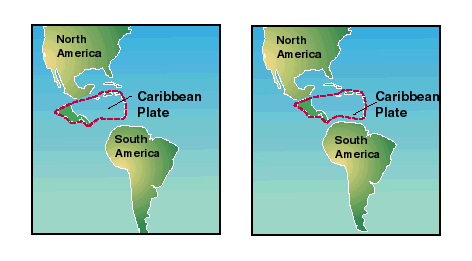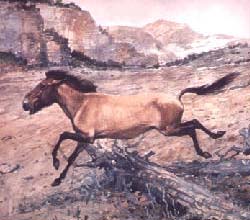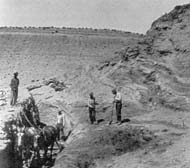Though a relatively short epoch, tremendous events occurred during the Pliocene, such as the development of ice caps, the drying of the Mediterranean, and the joining of the Americas.
Biogeographically, this epoch is characterized by the dramatic modernization of mammals. All of the presently existing orders and families are known from the Pliocene, as well as many of the existing genera.

The formation of a land bridge across the Isthmus of Panama between North and South America had profound impact on the fauna of these continents. Many North American animals invaded the southern continent and a few South American animals migrated north.

South American mammals found in North American Pliocene sediments include giant sloths, armadillos, and porcupines. The modern genus Equus also appeared in the Pliocene.

Epochs like Pliocene and Miocene are compared to sedimentary exposures in Europe. Just as we ultimately set our watches to the time in Greenwich, England, paleontologists date their rocks by comparing them to these European standards, or “type” localities. These type localities for the epochs are marine; they contain abundant seashells and other fossil animals from ancient oceans

It is difficult, but not impossible, to determine relative ages of land mammal sites compared to those with marine fossils. At various places in the world, marine fossils will cover or mix with fossil land mammals or vice versa. Marine sediments intermingled with land mammal layers permit paleontologists to establish relative ages for these sediments based on “superposition.” For example, a horse fossil is older than the seashell lying over it, but younger than the shells below.
It is also possible to use modern radioactive decay methods to determine the actual age of a particular fossil, not just that it was older or younger than some English clam.
Horses that lived during the Pliocene:
Back to Time Scales Back to Horse Gallery
Banner illustration by Carl Buell. This is a detail from a painting displayed in the Hall of Florida Fossils at the Florida Museum of Natural History.